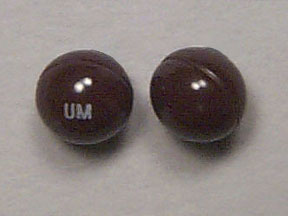Dronabinol Dosage
Medically reviewed by Drugs.com. Last updated on Jan 13, 2025.
Applies to the following strengths: 2.5 mg; 5 mg; 10 mg; 5 mg/mL
Usual Adult Dose for:
Additional dosage information:
Usual Adult Dose for Nausea/Vomiting - Chemotherapy Induced
Oral solution:
- Initial dose: 4.2 mg/m2 orally 1 to 3 hours prior to chemotherapy administration, then every 2 to 4 hours after chemotherapy for a total of 4 to 6 doses a day
- Maintenance dose: May escalate dose by 2.1 mg/m2 increments during a chemotherapy cycle or at subsequent cycles if the initial dose is ineffective and there are no significant side effects
- Maximum dose: 12.6 mg/m2 per dose
Oral solution comments:
- The initial dose should be rounded to the nearest 0.1 mg increment, and may need to be rounded to the nearest 0.1 mL increment (for dosing with an oral syringe).
- Patients should be given the initial dose on an empty stomach at least 30 minutes before eating; subsequent doses may be given without regard to meals.
- Healthcare providers should consider decreasing the dose to 2.1 mg orally once a day 1 to 3 hours prior to chemotherapy to decrease the risk of adverse reactions.
Oral tablets:
- Initial dose: 5 mg/m2 orally 1 to 3 hours prior to chemotherapy administration, then every 2 to 4 hours after chemotherapy for a total of 4 to 6 doses a day
- Maintenance dose: May escalate dose by 2.5 mg/m2 increments during a chemotherapy cycle or at subsequent cycles if the initial dose is ineffective and there are no significant side effects
- Maximum dose: 15 mg/m2 per dose
Oral tablet comments:
- Most patients respond to 5 mg given 3 or 4 times daily.
- Clinical trial data indicate escalating the dose above 7 mg/m2 increased the frequency of adverse effects with no additional antiemetic benefit.
Use: Treatment of nausea and vomiting associated with cancer chemotherapy in patients who have failed to respond adequately to conventional antiemetic treatments
Usual Adult Dose for Anorexia
Oral solution:
- Initial dose: 2.1 mg orally 2 times a day 1 hour before lunch and dinner; reduce dose to 2.1 mg orally once a day 1 hour before dinner or at bedtime for patients unable to tolerate 4.2 mg/day
- Maintenance dose: May increase dose to 2.1 mg/day or 4.2 mg/day orally (2.1 mg 1 hour before lunch and 4.2 mg 1 hour before dinner OR 4.2 mg 1 hour before lunch and 4.2 mg 1 hour before dinner) when adverse effects are absent/minimal or when further therapeutic effect is desired
- Maximum dose: 16.8 mg/day (8.4 mg orally 2 times a day)
Oral tablets:
- Initial dose: 2.5 mg orally 2 times a day 1 hour before lunch and dinner; reduce dose to 2.5 mg orally once a day 1 hour before dinner or at bedtime for patients unable to tolerate 5 mg/day
- Maintenance dose: May increase dose to 7.5 mg/day or 10 mg/day orally (2.5 mg before 1 hour before lunch and 5 mg 1 hour before dinner OR 5 mg 1 hour before lunch and 5 mg 1 hour before dinner) when adverse effects are absent/minimal or when further therapeutic effect is desired
- Maximum dose: 20 mg/day (10 mg orally 2 times a day)
Comments:
- The majority of patients in clinical trials were treated with oral tablet formulations of 5 mg/day, although the dosages ranged from 2.5 to 20 mg/day.
- If CNS symptoms (e.g., feeling high, dizziness, confusion, somnolence) occur, they usually resolve in 1 to 3 days with continued dosage.
- Early morning administration has been associated with an increased frequency of adverse reactions as compared to dosing later in the day.
Use: Appetite stimulant for anorexia associated with weight loss in AIDS patients
Renal Dose Adjustments
Data not available
Liver Dose Adjustments
Data not available
Dose Adjustments
Nausea/Vomiting-Chemotherapy Induced:
- Oral solution: Healthcare providers should consider initial doses of 2.1 mg/m2 orally once a day 1 to 3 hours before chemotherapy in geriatric patients to reduce the risk of CNS reactions.
Severe or Persistent CNS Symptoms (when treating anorexia in AIDS patients):
- Oral solution: 2.1 mg orally once a day 1 hour before dinner OR at bedtime
- Oral tablets: 2.5 mg orally once a day 1 hour before dinner OR at bedtime
- Doses should be given in the evening or at bedtime if symptoms continue to be a problem.
Precautions
Safety and efficacy have not been established in pediatric patients; this drug is not recommended for use in these patients.
Consult WARNINGS section for additional precautions.
US Controlled Substance:
- Schedule II (oral solution formulations)
- Schedule III (oral capsule formulations)
Dialysis
Data not available
Other Comments
Administration advice:
- Caution is recommended in dose escalation due to the significant increase of disturbing psychiatric symptoms at the maximum dose.
- Coadministration with phenothiazines (e.g., prochlorperazine) may result in improved efficacy, as compared to either drug alone, without additional toxicity.
- Dose individualization is recommended to achieve maximum treatment benefit.
- Therapy should be initiated at the lowest recommended dose and titrated to clinical response.
- Patients should drink a full glass of water after taking a dose of the oral solution.
Storage requirements:
- This drug should be packaged in a well-closed container, with unopened bottles kept refrigerated at 2 to 8 degrees Celsius (36 to 46 Fahrenheit), and protected from freezing.
- Oral solution formulations may be stored at 20 to 25C once opened for up to 28 days.
Reconstitution/preparation techniques: The manufacturer product information should be consulted for further details regarding the oral solution.
General:
- This drug demonstrates reversible, dose-related effects on appetite, mood, cognition, memory, and perception; these phenomena increase in frequency with higher dosages and are subject to great interpatient variability.
- Tachyphylaxis and tolerance develop to some of the pharmacologic effects of this drug and other cannabinoids with chronic use; however, they do not appear to develop to the appetite stimulant effect of this drug.
- The estimated lethal human dose is 30 mg/kg (IV).
- Overdosage: Gut decontamination is recommended for recent serious oral ingestion; the manufacturer product information should be consulted for overdose management.
Monitoring:
- Cardiovascular: Blood pressure and heart rate (after dose adjustments)
- Nervous System: Signs/symptoms of syncope (after dose adjustments); seizures
Patient advice:
- This drug may cause side effects such as dizziness and drowsiness that can affect your ability to perform certain activities; avoid driving and tasks such as operating machinery until you know that you can perform these activities safely during treatment.
- Do not drink alcohol while taking this drug.
More about dronabinol
- Check interactions
- Compare alternatives
- Pricing & coupons
- Reviews (62)
- Drug images
- Latest FDA alerts (1)
- Side effects
- During pregnancy
- Drug class: miscellaneous antiemetics
- Breastfeeding
- En español
Patient resources
Other brands
Professional resources
Other brands
Related treatment guides
See also:
Further information
Always consult your healthcare provider to ensure the information displayed on this page applies to your personal circumstances.


